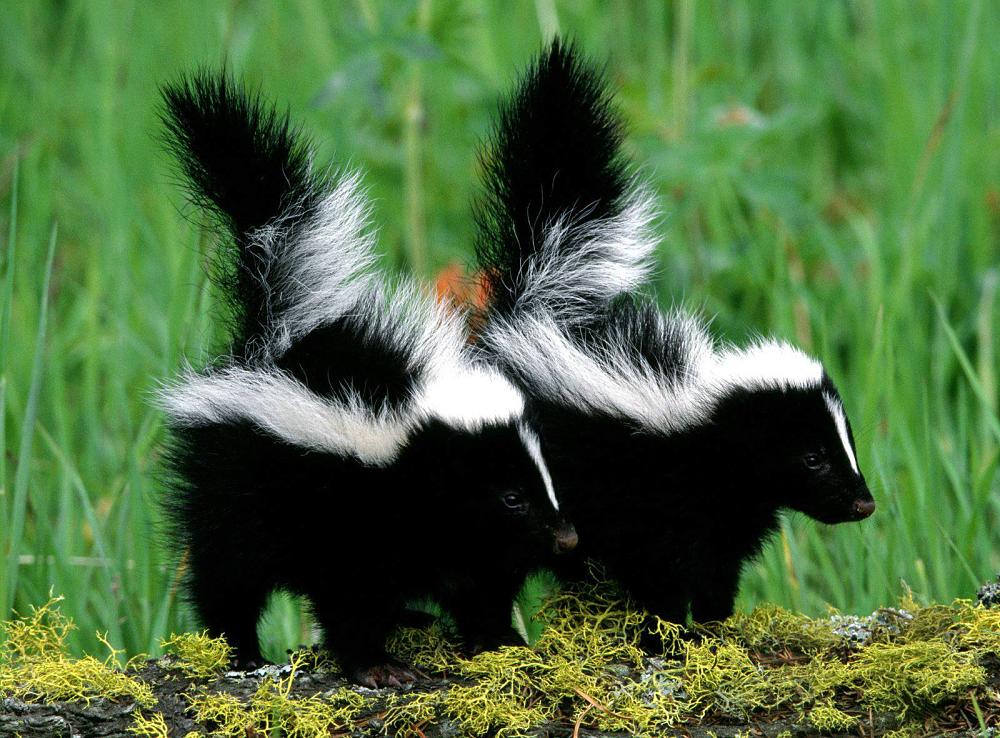Sports for Environmental Health: How Individual and Team Activities Foster Ecological Awareness
The intersection of sports and environmental health
Sports activities, whether pursue severally or as part of a team, contribute importantly to environmental health through multiple pathways. These contributions extend beyond the obvious physical benefits to participants and create ripple effects that positively impact our ecological systems.
Both individual and team sports foster environmental consciousness, promote sustainable practices, and create communities dedicate to preserve natural spaces. Understand these connections reveal how athletic pursuits can become powerful vehicles for environmental stewardship.
Individual sports and environmental connection
Personal interaction with natural environments
Individual sports oftentimes place participants immediately in natural settings, create immediate environmental awareness. Activities like hiking, trail running, open water swimming, and rock climbing immerse athletes in wilderness areas, foster a personal connection with nature that oftentimes translate to conservation mindsets.
Research show that people who regularly engage with natural environments through sport develop stronger environmental values. A study publish in the journal of environmental psychology find that outdoor athletes report importantly higher levels of environmental concern compare to non athletes or those who exercise alone indoors.
Trail runners, for example, oftentimes become advocates for the preservation of wilderness areas after experience their beauty firsthand. Many join conservation efforts to maintain the trails they use and protect the surround ecosystems from development or degradation.
Low impact transportation options
Individual sports like cycling, skateboarding, and rollerblading provide environmentally friendly transportation alternatives. When people adopt these activities as both recreation and transportation methods, they reduce carbon emissions associate with motorized vehicles.
Urban cyclists conjointly prevent thousands of tons of greenhouse gases from enter the atmosphere yearly. Cities that invest in cycling infrastructure report measurable improvements in air quality, especially in areas with high bicycle commuter rates.
Beyond the direct environmental benefits, these activities normalize human power transportation in communities, gradually shift cultural attitudes toward more sustainable mobility options.
Minimal resource requirements
Many individual sports require minimal equipment or infrastructure, result in smaller ecological footprints. Activities like run, swimming, and body weight exercises need few manufacture goods and limited dedicated spaces.
The simplicity of these sports contrasts aggressively with resource intensive activities that require extensive facilities or equipment production. A runner need sole a pair of shoes, while activities like golf demand vast maintain landscapes and significant water resources.
This minimalist approach to sport aligns course with environmental values that prioritize reduce consumption and resource conservation.
Team sports and collective environmental impact
Community base environmental initiatives
Team sports create organize communities that can mobilize for environmental causes. Sports clubs and leagues progressively incorporate environmental stewardship into their missions, organize activities like park cleanups, tree plantings, and habitat restoration projects.
Youth soccer leagues have pioneer field adoption programs where teams take responsibility for maintaining public spaces, remove litter, and report environmental concerns to local authorities. These initiatives teach young athletes that environmental care is a collective responsibility.
The social networks form through team sports become powerful platforms for spread environmental awareness and coordinate conservation efforts that would be challenge for individuals to accomplish solo.
Sustainable facility management
Modern sports facilities progressively showcase environmental best practices. Professional and amateur leagues like have embraced green building standards, renewable energy, water conservation measures, and waste reduction programs.
The green sports alliance report that sports venues implement comprehensive sustainability programs reduce their environmental impact by up to 40 % while simultaneously cut operational costs. These facilities serve as visible demonstrations of sustainable practices for the broader community.
College athletic departments have become leaders in this movement, with many campus facilities achieve LEED certification and implement zero waste initiatives that divert over 90 % of game day waste from landfills.
Educational platforms for environmental messaging
Team sports command significant public attention, create powerful platforms for environmental education. Professional teams and high profile athletes use their visibility to promote environmental causes and model sustainable behaviors.
The NBA’s green week initiatives have reach millions of fans with messages about energy conservation and recycling. Likewise, major league baseball’s green glove award recognize teams that implement outstanding environmental programs, incentivize sustainable operations throughout the league.
When popular athletes speak about environmental issues, they reach audiences that might not engage with traditional environmental messaging, broaden the base of support for conservation efforts.
Shared environmental contributions of all sports
Promote outdoor recreation and conservation
Both individual and team sports create constituencies that advocate for the preservation of recreational spaces. Athletes become stakeholders in environmental protection because their activities depend on healthy ecosystems and accessible natural areas.
Outdoor sports participants systematically rank among the almost active supporters of conservation legislation. Their firsthand experience with environmental degradation — whether witness beach pollution while surf or encounter habitat loss while hiking — transform abstract environmental concerns into personal priorities.
This advocacy translates into political support for protect areas, conservation funding, and environmental regulations that benefit ecosystemairr beyond recreational spaces.
Reduce screen time and energy consumption
Active participation in sports, whether individual or team base, reduce time spend on electronic devices. This shift decrease household energy consumption and mitigate the environmental impact associate with digital entertainment.
The energy savings multiply when consider the entire lifecycle of electronic entertainment — from manufacture energy intensive devices to power data centers that support streaming services and online gaming.
Communities with higher sports participation rates typically report lower per capita electronic media consumption, create a measurable environmental benefit alongside the advantageously document health advantages.
Health benefits reduce medical resource use
The health benefits of sports participation indirectly benefit the environment by reduce demand for medical resources. Physically active populations experience lower rates of chronic disease, decrease the resource intensive treatments these conditions require.
Healthcare facilities generate significant waste and consume substantial energy. By prevent illness through physical activity, sports indirectly reduce the environmental footprint of medical care.
Public health researchers estimate that increase physical activity rates by exactly 10 % could prevent thousands of hospitalizations yearly, with corresponding reductions in medical waste, pharmaceutical production, and healthcare facility energy use.
Environmental challenges in sports
Resource intensive sports infrastructure
Some sports facilities present significant environmental challenges. Golf courses, ski resorts, and motorize sports venues oftentimes require extensive land modification and ongoing resource inputs that can harm local ecosystems.
Water consumption for facility maintenance present a particular concern. A single golf course can use 300,000 gallons of water every day during peak season — equivalent to the daily water use of most 2,000 averageAmericanss.
Progressive sports organizations are address these concerns through sustainable design principles, utilize native landscaping, implement water recycling systems, and minimize chemical applications.
Travel relate carbon emissions
Competitive sports frequently involve significant travel, generate substantial carbon emissions. Professional leagues, college teams, and eventide youth sports organizations contribute to transportation relate environmental impacts.
The carbon footprint of a single professional sports team can exceed 5,000 metric tons yearly scarce from travel relate activities. International competitions multiply this impact when athletes and spectators fly globally to participate.
Lead organizations have implemented carbon offset programs, optimize travel schedules to reduce flights, and invest in more efficient transportation options to mitigate these effects.
Equipment manufacturing and waste
Sports equipment production consumes resources and generates pollution through manufacturing processes. The short lifecycle of many sporting goods exacerbate this problem when items are oftentimes replace and discard.
Athletic footwear present a particular challenge, with over 300 million pairs discard yearly in the United States unique. Well-nigh contain synthetic materials that resist decomposition in landfills.
Innovative companies are address these issues by develop equipment from sustainable materials, implement take back recycling programs, and design yearn last products that reduce replacement frequency.
Innovations connect sports and environmental health
Eco sports movements
New sporting movements explicitly connect athletic activity with environmental action. Logging — combine jogging with pick up litter — originate in sSwedenbut has spread globally as participants simultaneously improve their fitness and clean public spaces.
Similar activities include” green kayaking, ” here paddlers collect float debris from waterways, and “” nservation volleyball, ” ” ch incorporate beach cleanup into recreational play.
These hybrid activities represent a growth recognition that sports can forthwith contribute to environmental improvement instead than but minimize harm.
Sustainable sports equipment innovation
Manufacturers progressively develop sports equipment use recycled materials and environmentally friendly production methods. Tennis balls make from recycled rubber, surfboards craft from sustainable materials, and athletic apparel produce from reclaim ocean plastic exemplify this trend.
These innovations reduce virgin resource consumption while create market incentives for recycle programs and sustainable material development.
Consumer demand for eco-friendly sports equipment has grown considerably, with surveys indicate that over 60 % of athletes consider environmental factors when make purchasing decisions.
Virtual sports communities with environmental missions
Digital platforms nowadays connect athletes around environmental causes. Apps like Strava and papyrus have iimplementedfeatures that allow users to participate in collective environmental challenges, such as log miles to support conservation organizations.
These virtual communities amplify individual environmental actions and create accountability networks that sustain long term environmental commitments.

Source: plan2play.com
The combination of athletic achievement tracking with environmental impact measurement provide powerful motivation for continue participation in both sports and conservation activities.
Cultivate environmental awareness through sports
Youth sports environmental education
Youth sports programs progressively incorporate environmental education into their curricula. Coaches teach young athletes about the ecological contexts of their activities and emphasize responsible stewardship of natural resources.
Organizations like the outdoor alliance for kids connect youth sports participation with conservation education, create experiences that simultaneously develop athletic skills and environmental values.
These programs recognize that childhood sports experiences shape lifelong attitudes toward both physical activity and environmental responsibility.

Source: kingstonyouthlacrosse.org
Corporate sponsorship of environmental sports initiatives
Corporate sponsors progressively support environmentally focused sports events and programs. From marathon sponsors fund park restoration to outdoor equipment companies protect wilderness areas, these partnerships connect commercial interests with environmental progress.
The outdoor industry association report that member companies contribute over $100 million yearly to conservation projects, much of it channel through sports relate initiatives.
These investments create virtuous cycles where environmental protection enhance recreational opportunities, which in turn build stronger constituencies for conservation.
Create a healthier environmental future through sports
Both individual and team sports contribute meaningfully to environmental health through diverse mechanisms. From foster personal connections with nature to mobilize collective action, sports activities create pathways for environmental engagement that complement their physical and social benefits.
The virtually significant environmental contributions oftentimes emerge at the intersection of individual and team approaches — when personal values develop through individual sports find expression through the collective power of sports communities.
By recognize and strengthen these connections, sports organizations, environmental advocates, and individual athletes can maximize the positive ecological impact of sporting activities while address the environmental challenges they sometimes present.
As we face mount environmental challenges, the unique ability of sports to inspire action, build community, and connect people with natural systems offer valuable opportunities for advance environmental health. Whether pursue solo on a mountain trail or unitedly on a community field, sports activities can help cultivate the environmental awareness and commitment need for a sustainable future.
MORE FROM techitio.com













